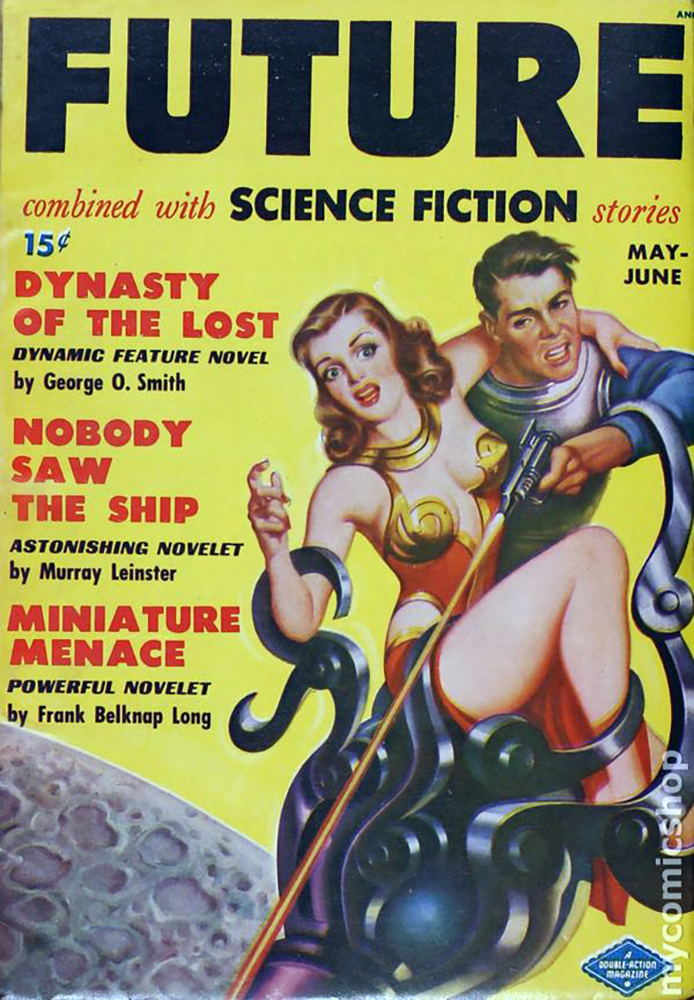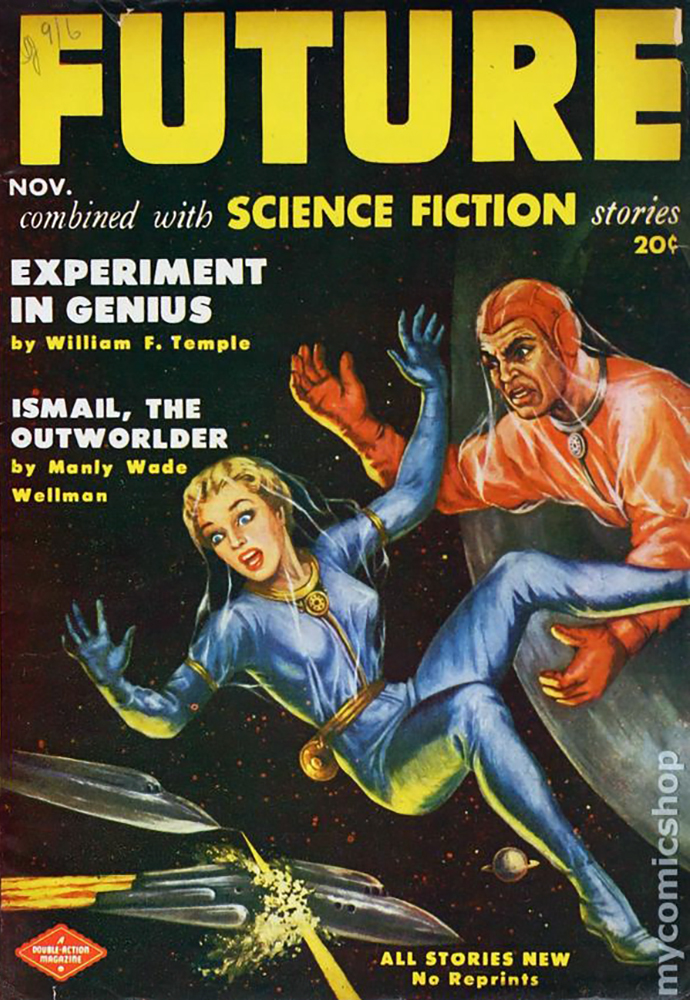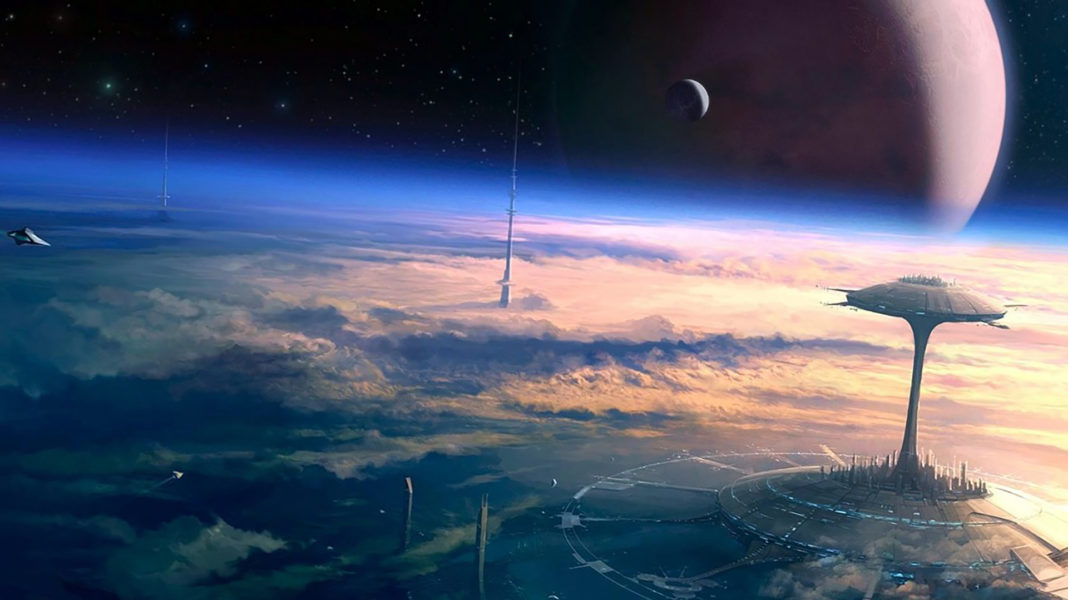As the sell-by date on Blade Runner whizzes by, Donal O’Keeffe remembers other fictional futures now past.
November 2019: former LAPD officer Rick Deckard is assigned the task of finding and terminating – with extreme noir-ness – a group of escaped bio-engineered artificial human replicants. It’s lashing rain in Los Angeles and the air is filled with flying cars and giant advertising holograms. Everything is sushi and neon and origami.
As November 2019 withers away, Blade Runner (1982) can no longer be said to be set in the future.
All those moments will be lost in time, like tears in rain.
Well, maybe not, but nothing tends to age quicker than an imagined future, especially one with a specified sell-by date.
If you look at the calendar and wonder why we haven’t got household robots, jetpacks and colonies on the moon yet, chances are your calendar is on a hand-held pocket computer which can connect immediately to the sum of human knowledge, or, if you prefer, to an ocean of rage, stupidity and pornography.
Fictional futures have always appealed to us, even long after the date in which they were set has passed.
March 1897: New York is torn apart by rioting, as populist politician William Bryan is elected president of the United States.
The works of Ingersoll Lockwood, (1841-1918) lawyer, diplomat, and author, were rediscovered recently when it was noticed that his strange Baron Trump novels, The Travels and Adventures of Little Baron Trump and His Wonderful Dog Bulgar (1889) and Baron Trump’s Marvellous Underground Journey (1893) offer several bizarre resonances with the current US first family, not least with Donald Trump’s youngest child, Barron Trump.
Lockwood’s third novel, 1900: or, The Last President, predicted that a populist demagogue would ascend to the US presidency, and bring about the end of the American Republic. Bizarrely, one scene depicts a rioting mob attacking a Fifth Avenue hotel, nowadays the site of – you guessed it – Trump Tower.
Some imagined futures have aged better than others, and one of the best-written is 70 years old this year.

April 4, 1984: We have always been at war with Eurasia.
George Orwell’s Nineteen Eighty-Four was published in June 1949, Eric Arthur Blair’s ninth and final book, and its title – and the date of its dystopian future – was reportedly only picked by Orwell as a partial reversal of the year in which he completed it, 1948.
If Orwell could see 2019, where objective reality has become displaced by subjective opinion, and personal freedom is voluntarily surrendered and monetised, where the powerful rewrite history and recast the present to their own ends, and where a fanatical loyalty to brutish leaders renders people blind to hatred and cruelty, he might realise how much of Nineteen Eighty-Four turned out to be depressingly prophetic.
December 1986: A mysterious old man and two young companions appear at the South Pole Snowcap Base, just as Mondas, the long-lost Tenth Planet, returns to our solar system, bringing humanity’s silver nemesis, the Cybermen.
1986 was two decades away when The Tenth Planet aired. When it comes to future dates no longer in the future, BBC’s Doctor Who (1963 to the present) is the granddaddy (and now grandmother) of them all, and for a show all about an adventure in space and time, it has, perhaps unsurprisingly, a timeline riddled with contradictions, revisions and continuity errors.
The Doctor has given at least three different reasons Atlantis sank, two of them within a real-world year of each other, and watched the death of the planet Earth at least twice. And don’t even ask how many different origins the Daleks have.
When the show was revived by Russell T Davies in 2005, he rather cleverly introduced the concept of the Time War, a temporal conflict between the Doctor’s race, the Time Lords, and the Daleks which has rewritten time over and over, thus accounting for any continuity errors.

May 1987: US Astronaut Captain William ‘Buck’ Rogers blasts off, only six months before we all die in nuclear fire. That tends to happen a lot.
The 1979 TV series was *beady-beady-beady* terrible rubbish altogether, disco robots and all, but boy did I fancy Erin Gray.
1995: Funding running out on Project Quantum Leap, Dr Sam Beckett steps into the Project Accelerator – and vanishes. He awakes to find himself trapped in the past, suffering from partial amnesia and facing mirror images that are not his own.
Scott Bakula is only 65, and Dean Stockwell is a sprightly 83. It’s a genuine wonder the brilliant cult series Quantum Leap (1989-1993) has never been revived.
1996: The Eugenics Wars end after four years, with 37 million people dead. 84 genetic supermen, and their charismatic leader, Khan Noonien Singh, are exiled into space on the sleeper ship SS Botany Bay. At the height of his power, Khan controlled a quarter of the Earth’s surface from the Middle East to Asia.
Not that you’ll have read about that in the fake news media.
The 1990s were a distant three decades away when Star Trek first aired, and its creators set some of its backstory there, likely not expecting the future would care one way or the other. Generations of nerds would later beg to differ.
Khan (played by Ricardo Montalbán) was revived in 2267, where he would encounter the crew of the USS Enterprise NCC-1701. Years later, he would resurface, leading a terrorist campaign which would cost Admiral James T Kirk his best friend and first officer, Spock.
One element of Star Trek’s distant past remains four years in our future. According to Star Trek: The Next Generation’s android Commander Data in the 1990 High Ground, the 24th century remembers that Ireland was unified in 2024 following a campaign of violence.
Thanks all the same, Data, but we’ve enough to be going on with at the moment what with Brexit, and the Shinners trying to stir up a border poll.
Mind you, Star Trek: Into Darkness (2013) is set in an alternate reality where Benedict Cumberbatch plays Khan Noonien Singh, and features scenes set in London in 2259, and the Union Flag is shown to still carry the red saltire of St Patrick, as well as the white saltire of St Andrew, despite current indications that the Union as it stands will not likely survive another decade, let alone another two centuries.
Answers via subspace…
1996: A pandemic wipes out most of humanity, driving the few survivors underground. A group styling itself the Army of the 12 Monkeys is blamed for releasing the virus.
August 29, 1997: Skynet becomes self-aware and the machines rise up and we all die in nuclear fire.
Seriously, nothing after Terminator 2: Judgement Day is worth bothering your arse with.
November 5, 1997: Evey Hammond, a desperate 16-year-old Londoner, sexually solicits a man who is in fact a member of the secret police. As he and his colleagues prepare to rape and murder her, she is rescued by a terrorist in a Guy Fawkes mask, on his way to bombing Westminster.
The dystopian future of Alan Moore and David Lloyd’s V for Vendetta looks as depressingly real now as it did in Thatcher’s time.
2001: Humanity’s first manned flight to Jupiter is jeopardised by a malfunctioning HAL 9000. Nine years later is the year we make contact.
October 15, 2015: American teenager Marty McFly arrives in a time-travelling DeLorean from 1985, little suspecting that a year later, someone as near as damnit to Biff Tannen would be elected President of the United States of America.
There are a thousand other examples of outdated futures, I know, but time (“Ha ha!” as Tom Baker’s Doctor might interject) is short.
“All those moments will be lost in time, like tears in rain”, said Rutger Hauer, all slow-motion drizzle and peroxide.
They won’t, of course, and Ridley Scott’s flawed masterpiece Blade Runner will be just fine whenever it’s set, and if some of us thought the sequel wasn’t that great, well, let’s see what 2049 thinks.
It’s only right that our fictional futures should be multiple choice.
After all, our real-life futures are multiple choice too.








